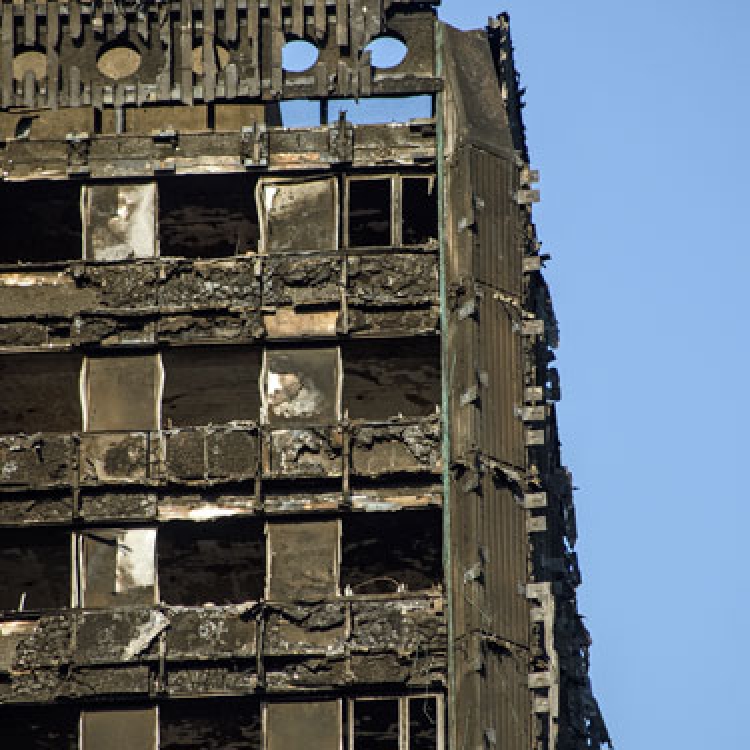Briefing: how should UK fire regulation be improved following Grenfell?

With the government's interim review of building regulations and fire safety due to be published shortly, Tom Roche of FM Global argues that achieving fire resilience means going beyond compliance.
Following the tragic and devastating fire at the Grenfell Tower in June 2017, the UK government commissioned the Independent Review of Building Regulations and Fire Safety, to investigate the accuracy and enforcement of regulations around fire safety looking closely at high-rise residential buildings, as well as other built environments.
With the interim report of the review due to be released soon, fire risk and fire regulation is still very much on both individuals' and businesses' agendas. Whether this is the perception that fire-regulations need to be updated, or that businesses and other stakeholders should be taking more concrete action, it is clear that fire risk will remain an important part of the national conversation in the immediate future.
In the midst of this regulatory conversation, what should businesses be considering?
Importance of fire risk mitigation
Fires continue to be the leading cause of property loss. Fires can cause millions of pounds worth of damage, leading to a severe loss of revenue, market share and reputation, as contracts are unable to be honoured.
The ABI recently highlighted that the number of property fire claims halved between 2006 and 2016, but the resultant cost of those fire claims moved from £1,108 million to £1,247 million in 2016. Whilst loss of revenue and profitability may well be covered by an insurer, the long-term losses associated with reputational damage and loss of market share may be unrecoverable.
Although the damage that a business can sustain from a fire can be significant, there are many steps that businesses can take to mitigate the damage.
Risk mitigation steps

Tried and trusted measures should always be the first priority for stakeholders looking to reduce fire risk and increase resilience. It is appropriate to review and update fire risk assessments with a keen eye on the impact a fire may have on operations. Confirm that items such as fire doors, fire dampers, alarms and sprinkler systems are functioning.
Consider potential mitigation measures in particular, such as automatic sprinkler systems that will limit the spread of fire and help increase resilience. Non-combustible materials should always be considered for buildings undergoing construction, and, where feasible, for retro-fitting existing buildings. If combustible materials are used, they should be appropriately tested and approved to demonstrate their large-scale fire performance. The use of non-combustible materials, along with automatic sprinklers, help to contain fire and limit the damage that a property might suffer, protecting the people and business within.
By limiting the spread of fire within a building, the damage that a specific event causes can be limited to one area. For instance, the importance of sprinklers is underlined by the fact that facilities without automatic sprinklers suffered losses which were around six times more costly than those with sprinklers installed. Most importantly a business fitted with sprinklers that activate to quell a fire can usually return to operation more quickly, rather than suffer longer-term interruptions.
Finally, businesses should also ensure that their supply chains are actively building resilience against fire risk. Resilience at vital locations, or 'pinch-points' within supply chains can be crucial for businesses. As with any facility, resilience ensures that normal operations can resume as swiftly as possible, helping to limit the long-term disruption that a business suffers. Risks within supply chains can also be reduced by ensuring that suppliers are also resilient and back-up suppliers are available, minimising disruption if a loss at a 'pinch-point' does occur.
How should the system of regulation in the UK be improved?
Although the interim report of the Independent Review of Building Regulations and Fire Safety has not yet been released, there are some important points to consider when it comes to UK fire regulation:
1. Building regulations should include measures to address fire resilience. Building resilience to fire currently means going beyond regulations. UK regulation is designed to ensure that people are alerted to a fire and have the means to escape it, whilst the structure resists the fire to give them time to do so. Regulation is also designed to limit fire spread to adjacent properties and affording access for the fire and rescue service. However, it isn't designed to safeguard the property itself, and huge damage can be incurred even if regulation is strictly followed. A recent study by YouGov (on behalf of the BSA) noted that nearly 70% of businesses surveyed felt that building regulation would help protect their property. This is not the case. It is time it should.
2. Emphasise the need for competence in fire resilience. A complex chain of professionals and trades are involved in constructing buildings. They can all have an impact on fire design when it comes to specifying, installing and designing systems. Many of these stakeholders are conducting activity without recognised training or oversight from a third-party certification body for that crucial fire related aspect. This needs to be addressed to ensure those providing equipment and services in fire do so with a level of recognised competence.
3. Reinforce the verification process and measures. At the same time as addressing competence we need to verify that the fire resilience specified is delivered. Currently it is almost impossible to identify who is ensuring that fire safety design is implemented for an entire building. This urgently needs to be addressed to ensure that the process is robust. This means a process that will verify the fire design, through the building chain, is delivered as intended and adequately explained to the building occupier.
4. Clarity on the fire performance of building materials. The testing of materials needs to be clarified. The attempts to explain varying degrees of combustibility of materials has clouded the issue. The vast array of material combinations that people would like to use means the path to understanding their performance in fire is also both challenging and complex. Therefore, we need to bring clarity to this issue for the sector and building users. We should ensure the position of full scale testing of material is unambiguous. This will mean that we have clarity for everyone when they are specifying materials and importantly over the performance they should expect.
In a world of emerging and intangible risks, the tragic event at Grenfell Tower serves as a reminder that businesses and communities alike must remain committed to mitigating against traditional, physical risk, such as fire. Perhaps the current system of fire regulation in place in the UK is no longer fit for purpose, considering our complex construction process and the changing use of our built environment. When the interim report of the Independent Review of Building Regulations and Fire Safety is released later this year, hopefully it will encourage both regulatory and behavioural change.

Tom Roche, Senior Consultant, International Codes and Standards, FM Global
